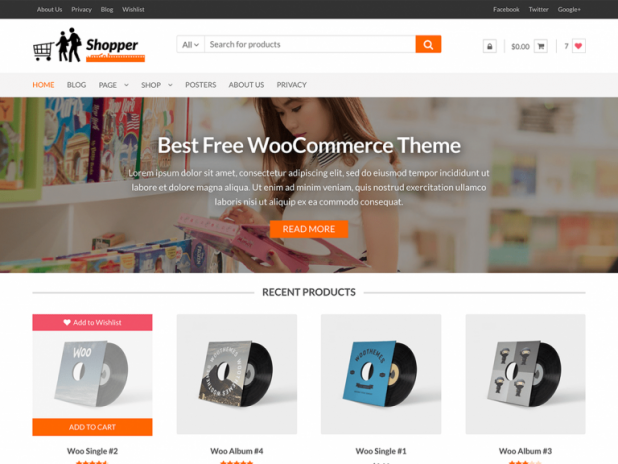October 30, 2020
By Phil Deeley in Business Ecommerce Featured Web Development
Setting up an online store can seem like an incredibly complex task.
And truthfully? The hardest part is often just getting started. But in today’s hyper-connected gig economy, starting a business is easier than ever.
So, how can you create your own ecommerce store and compete against larger brands during this crazy time? The honest answer is to create a solid marketing plan and execute it.
Not sure what that plan should include? Don’t worry. We’ve put together a 10-step action plan that you can follow to take your new idea from concept to a fully-functioning business.
1. Understand Your Business Scope
Business scope is an integral part of a business that many entrepreneurs learn too late. Just because an entrepreneur is good at blogging or fashion, does not mean they will be good at selling electronics full time.
Depending on the products you want to sell, you may need further education, like going to trade school, university, or obtaining field certifications. Typically, you want to be more educated than your customers, so that you can answer all their electronics questions, comments, and concerns.
Scope exists even within electronics. Electronics vary from company to company and from industry specialty to specialty. Selling dental equipment is very different from selling routers or electronic car parts.
Before starting an online shopping store, or branching out and offering other services, make sure the goods and services provided fall within your business’s scope. And if they don’t—expand your scope.
2. Create Customer Profiles
The more work you do before launching, the easier it will be to run an online store.
The following questions can help you make business decisions regarding the features customers will use, and which customers you want to attract:
- VoIP. Voice over Internet Protocol allows you to set up local customer service numbers internationally, at affordable price points. You can target customers by their country of origin using VoIP.
- Payment Model. Will the majority of your clients purchase one-time goods? Subscription services? Will your store accept donations? Payment models can significantly influence the style and theme of your website.
- Customer Profile. Are you selling to urban or rural customers? Are your customers well-educated? Do specific partisan preferences exist that you have regarding your customers?
Do market testing. Create SWOT (strengths, weaknesses, opportunities, threats) analyses. Develop detailed customer personas. Contact your local government representatives, or private industry marketers, for business advice.
Once you know the type of client you want, you will know how to best structure your online superstore.
The key is to understand what pain points your customers have, determine how your products can solve those problems, and demonstrate the positive outcomes they can experience.
3. Use Magento
You may feel confident in your coding ability. However, CMSs have many advantages over coding from scratch that you should consider using one, especially when you need to secure and save customer data.
CMSs are very popular. Using a CMS, you are abstracting away a lot of work that you do not need to do unless you like coding more than running an ecommerce site.
Two of the most popular CMSs on the web today are WordPress and Magento.
WordPress + WooCommerce and Magento often get tossed together in the same sentence. However, both these ecommerce-enabled platforms are different. Choosing WordPress or Magento depends on your website’s content.
WordPress, while known as a blogging CMS, is very popular for small ecommerce businesses (by using Woocommerce). Owners can run blogs as well as online stores with ease. However, if you run a larger company, Magento might be a better fit for you.
Magento offers more ecommerce-specific features than other competing CMSs. You will often find larger companies use Magento for this reason, as ecommerce is more of a business priority there.
Keep in mind that you can always start with WooCommerce, and then grow into a Magento site. You do not need to stick with one CMS for the life of your business. Business priorities change all the time.
4. The Power of Templating

Save yourself a lot of work and install a template or theme. Thousands of software developers all come together and provide their expertise in developing your theme so that you do not have to.
There are thousands of ecommerce themes to choose from with either CMS platform. The key is to find a theme that:
- Provides ongoing support and maintenance
- Is explicitly developed for ecommerce
- Looks good
The best reason why you should use a theme is that you can switch them without harming your website’s overall design.
If you do not like your online superstore’s look after some time, simply go to the developers’ website and download another theme. In an instant, your site will look different.
5. Essential Pages
Not all ecommerce web themes will have essential pages included in their basic theme demo. There are simply too many types of ecommerce websites around. Not every company uses a checkout page or a subscription page.
You will have to determine the pages you need, and the ones you need to generate.
Some popular ecommerce page options are as follows:
- Home
- About
- Products
- Checkout
- Account settings
- FAQs
- Shipping policies
- Billing
- Order confirmation page
- Shopping cart page
These are a few of the necessary pages you may need for your online superstore. Some more advanced page options are as follows:
- Currency settings
- Product settings
- Inventory management
- Tax calculators
- Account settings
For assistance with determining the pages you need for your electronics store, look at the competition. Look at the commonalities between their websites and how their differences make each one stand out.
6. Third-Party Plugins and Extensions
WordPress plugins and Magento extensions offer considerable advantages when running an online store. You can quickly expand the number of features you provide visitors and the depth of those features. Being able to accept Google Pay or Apple Pay, for example, can be the difference between a successful and failed sale.
Make sure the plugin or extension is well-reviewed and updated often. Perform a search online and see what users are stating about the plugin or extension on forums, in YouTube video comments, and even on social media.
A great plugin or extension can augment your business. A not-so-great plugin or extension can cause your online superstore to regress. Make sure that each plugin or extension you add improves your website. Doing so will increase sales and reduce the amount of work you need to do.
7. Customizing Goods and Services
Not all goods and services can fit into an online store template. You may have to customize the parameters for your store, especially when running an electronics online store.
Electronics can be:
- rebranded depending on the country of origin or shipping
- deployed in different versions for different countries
- not available due to political embargos
- not available due to lack of demand (which means they will need to be shipped internationally)
Similar issues also occur with vehicles, for instance. Vehicle manufacturers develop the same cars with different names, components, and even different paint jobs depending on the country of delivery.
Popular goods and services options are below:
- Information. What is the product’s purpose?
- Stock. How many copies of the product are near the customer?
- Reservations. Can the customer reserve a product?
- Restrictions. Are some products not sellable to customers based on their age, location, and more.
You can always expand or contract goods and service options at any time.
8. Social Media Integrations
A company cannot only depend on a sole website for marketing potential. Even non-ecommerce sites use social media and platforms to spread awareness of their goods and services and increase their customer base.
Some of the most popular online superstores in the world that sell all types of products, and that advertise on social media, include the following:
Popular social media sites and platforms where you can find the best electronics stores advertising include:
While some social media platforms and websites appeal to specific demographics (for instance, youth use TikTok while their parents use Facebook), social media is incredibly shareable, even on your WordPress/Magento website.
Research which WordPress and Magento social media plugins and extensions are right for you.
9. Magento Support and Maintenance

Once your sales volume grows, reach out to online support and maintenance companies, especially ones that specialize in ecommerce. You will need a customer service workforce to handle customer complaints, refunds, questions, and more.
Not having to handle all that yourself, especially if your company is small, frees up a bunch of time you can invest in other areas of your business. You can either look locally for these services or outsource nationally or internationally for better rates.
10. The Final Step: A Necessary Trip to the Government
Eventually, you will need to consult with your local bureaucracy regarding your online superstore. You may need a business license. You may want to incorporate your company, or even just expand into physical spaces, bring in partners, pay taxes and licenses, and more.
By following these ten actionable steps, you can easily set up an online superstore.
Each country and local government is different, so consult with a representative online or by telephone before you meet. For example, in America, you can easily contact the Small Business Administration.
Bonus Tip: Leverage Professional Help to Expedite Time to Market
Starting a business on your own is hard. You need to wear many hats—which means you may be your company’s marketing department, CEO, COO, and everything in between.
But the biggest tip we can give you is to leverage other professionals to complement your strengths. You can’t be an expert at everything, and that often means trusting agencies, freelancers, and other contractors to fill in the gaps. And that may mean finding a suitable ecommerce web design company to build a beautiful and functional website.